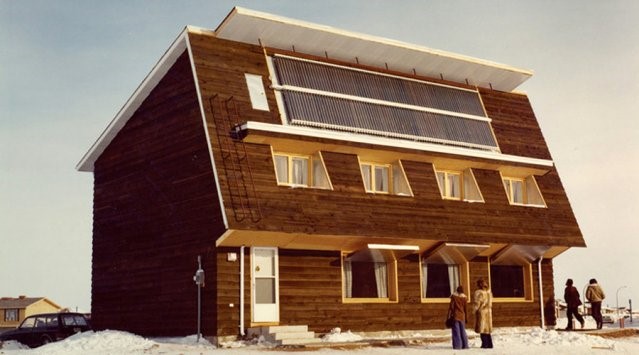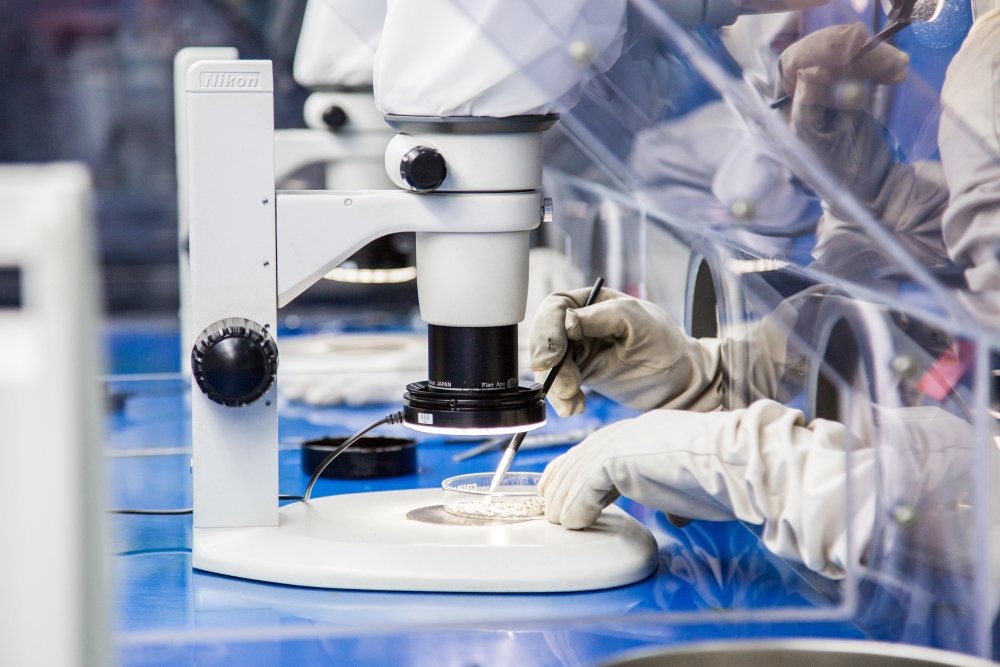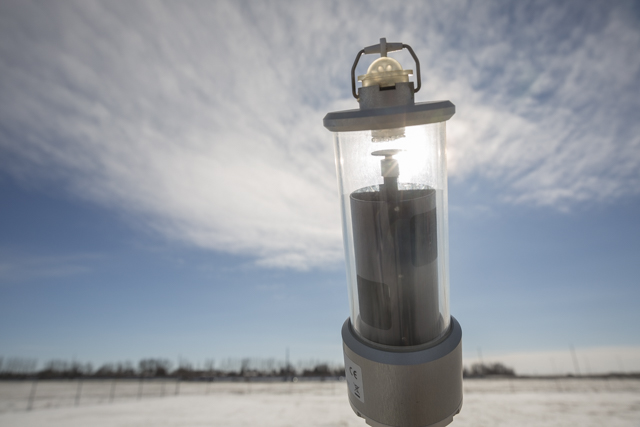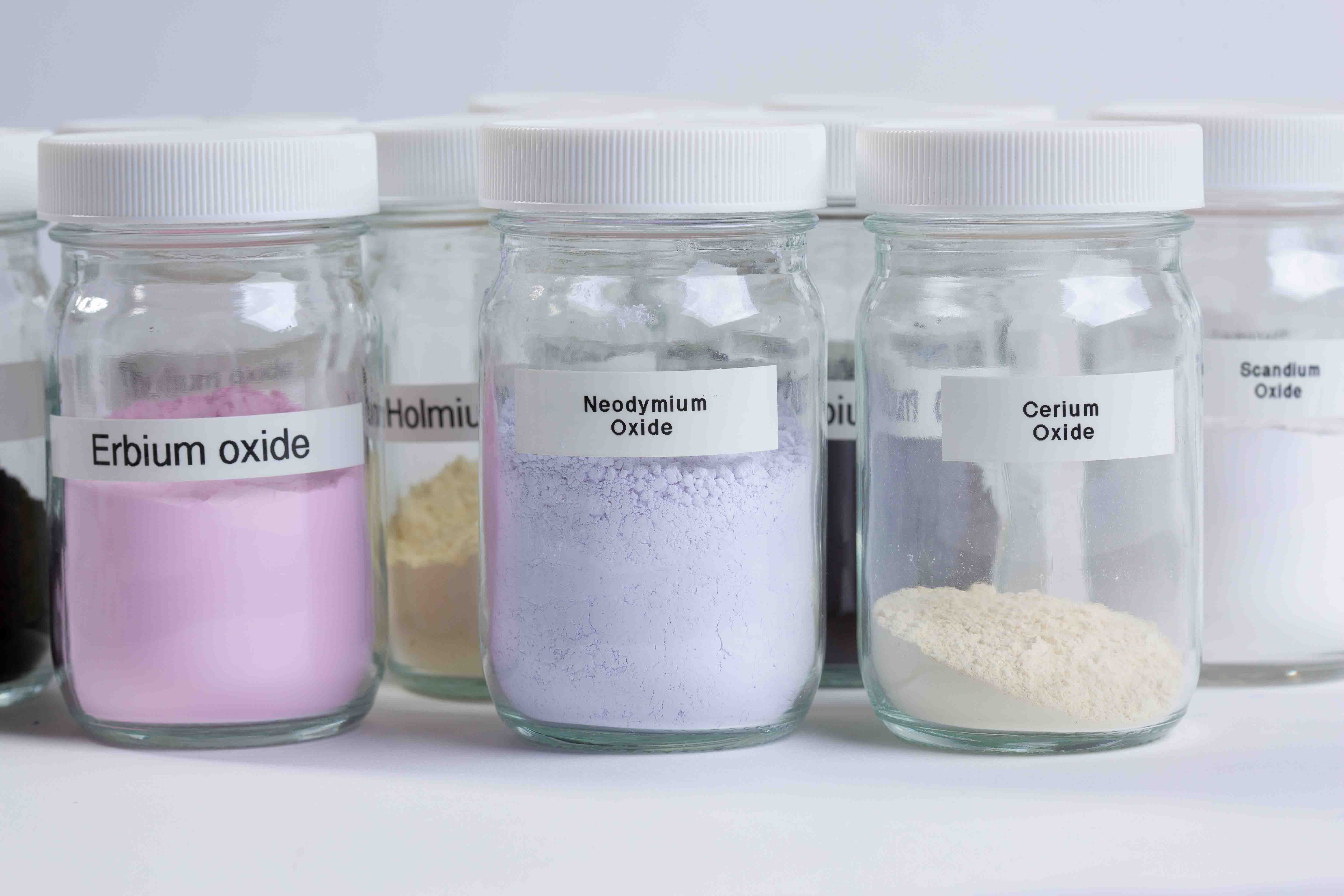Did you know SRC has been a force in innovation for over 75 years? It’s true! We’re Canada’s second largest research and technology organization with 1,500 clients in 27 countries around the world. Let’s take a look back at just some of the innovation SRC has been a part of over the decades.

Saving the Day
Did you know SRC was a leader in energy-efficient home design?
Back in the 1970s, the world was in an energy crisis because of high crude oil prices. The Organization of Petroleum Exporting Countries (OPEC) raised the price and this presented Canadians with much higher home energy bills. Oil was a common source for home heating, and prices spiked drastically.
The energy crisis led people to look for ways to reduce their energy costs, and the Government of Saskatchewan reached out to SRC for help. They tasked SRC with managing a new project—an energy conservation demonstration home. Named the Saskatchewan Conservation House, the project would examine cost-effective ways to reduce energy use for homeowners.
The home (located in northwest Regina) opened in 1977 to the public for tours and garnered much attention from all over the world. In fact, the Saskatchewan Conservation House would pave the way for housing research and ideas in jurisdictions across the planet. It is still referred to in many research projects today and was the start of what is now known as PassivHaus/Passive House Design.

Carbon Under Pressure
Did you know Saskatchewan is home to one of the world’s largest diamond labs?
It is! SRC’s Geoanalytical Laboratories contain a highly secure diamond facility that supports diamond mining from early exploration right to metallurgical testing. The facility assists diamond mining at the very start, able to find the presence of diamonds in kimberlite to help companies target diamond deposits.
SRC also has a micro-diamond recovery lab, too. There are 80 kilns available that can help scientists find diamonds as small as 75 microns (that’s really small!). Every recovered stone is assigned an identification number, hand-sorted and documented for size, weight, colour, clarity, crystal shape, and primary and secondary surface features.
Diamonds have a long road to travel before they end up in jewelry and SRC is one stop on their way to landing in a glass showcase or velvet box.

Reading the Skies
Did you know SRC worked with NASA?
In the 1960s, SRC was chosen by NASA to install remote weather stations as part of its BOREAS project (Boreal Ecosystem-Atmosphere Study). Since then, SRC has been active in climate monitoring and research, providing climatological observations to industries and organizations.
SRC operates two Climate Reference Stations—one in Saskatoon and one in Prince Albert—to record data and observe climatic trends. The Saskatoon site was built in 1963, and the Prince Albert station came online in 2011. Both stations record readings every half hour, collecting data on temperature, precipitation amount, humidity, wind and atmospheric pressure. They also collect supplemental observations on rate of rainfall, soil temperatures, bright sunshine, snow depth, grass temperature, soil moisture and solar radiation.
Both sites are principal climatological stations with supplementary climatological observations and meet World Meteorological Organization and Environment Canada standards.
SRC used the data collected at the stations to support many of its programs, including spray drift work, the Boreal Ecosystem Atmosphere Study (BOREAS) and collaborations with various Canadian universities and the Prairie Adaptation Research Collaborative.

Critical Thinking
Did you know that SRC is working in Rare Earth Elements?
SRC is leading the way in Rare Earth Elements (REE), with the planned construction of a first-of-its-kind Rare Earth Processing Facility in Saskatoon.
The facility will be the start of an REE supply chain for the province, developing more opportunity for future expansion of the REE mining industry. Saskatchewan is home to many REE metals, which are in demand around the world in everything from telecommunications to aerospace technology.
The conversion of REE ore to individual REE products is done in two stages—the first is the concentration of ore to mixed REE product and the second is the more complex separation stage that converts the mixed REE product to commercial pure-grade REEs. The facility will address both stages of REE processing, a first in Canada.
This post was written by Brook Thalgott, a former SRC employee.
